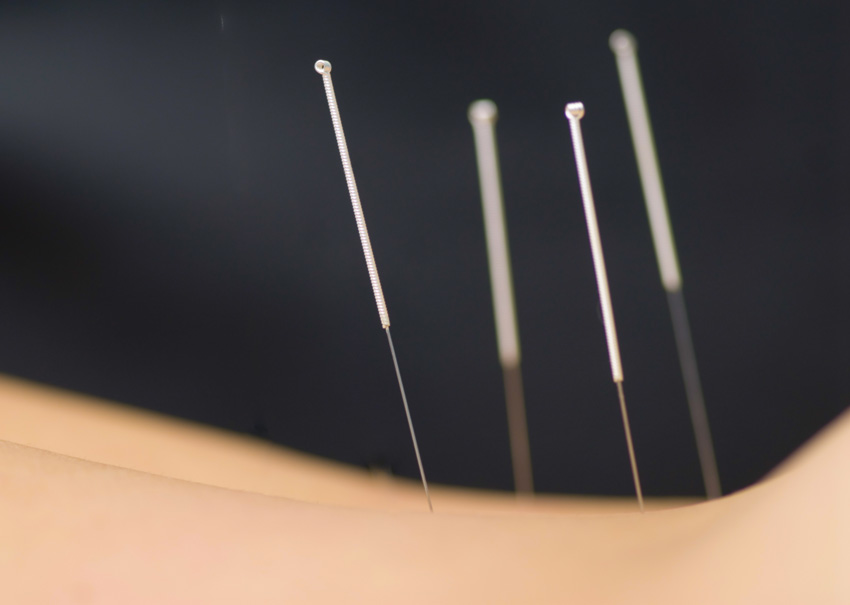
Acupuncture and herbal medicine rival drug therapy for the alleviation of restless legs syndrome (RLS). Second Affiliated Hospital of Zhejiang Traditional Chinese Medicine University researchers compared the therapeutic effects of acupuncture plus herbs with that of a pharmaceutical medication. One study group received acupuncture plus a modified version of the herbal formula Gui Zhi Long Gu Mu Li Tang. Another group received gabapentin tablets. Based on the data, the researchers conclude that acupuncture plus herbs is equally effective as gabapentin for the treatment of restless legs syndrome. However, acupuncture plus herbs produced significantly less adverse effects. [1]
Drug therapy produced a 37.5% adverse effect rate whereas acupuncture plus herbs produced a 2.5% adverse effect rate. Drug therapy produced nausea, vomiting, dizziness, drowsiness, and neurogenic edema. The drug group had 6 cases of nausea and vomiting, 13 cases of dizziness, 6 cases of drowsiness, and 5 cases of neurogenic edema. The acupuncture treatment group had 1 case of nausea and vomiting, 0 cases of dizziness, 1 case of drowsiness, and 0 cases of neurogenic edema.
Results were determined by analysis of the RLS severity score, Pittsburgh Sleep Quality Index (PSQI), and adverse effect rates. PSQI is a self-rated assessment tool used to measure sleep quality and patterns. Patients in both groups improved significantly within their own groups regarding RLS severity and PSQI scores and there were no significant differences between both groups after treatment.
The acupuncture group had a mean 21.30 RLS severity score and 10.60 PSQI score before treatment, which improved significantly to 7.30 and 4.75 after treatment. Likewise, the drug group had a mean pre-treatment RLS severity score of 21.75 and PSQI score of 10.00, with significant improvements after treatment at 7.40 and 4.65 respectively.
Treatment
Researchers (Xia et al.) used the following study design. Forty patients were treated and evaluated in this study. The patients were diagnosed with restless leg syndrome between June 2015 and December 2016. They were randomly divided into an acupuncture treatment group and a drug control group. For the drug control group patients, gabapentin was administered. The treatment group received acupuncture in addition to modified Gui Zhi Long Gu Mu Li Tang. In Traditional Chinese Medicine (TCM), this herbal formula is used to tranquilize the mind, relieve pain, alleviate depression, and calm mental restlessness.
Procedure
For the gabapentin group, patients received 0.2 gram doses of gabapentin tablets, orally administered, 3 times per day, for 30 consecutive days. The acupuncture group received body acupuncture at the following acupoints:
- Jiaji points of L4–5
- Jiaji points of L5–S1
Acupuncture treatments commenced with patients in a prone position. After disinfection of the acupoint sites, a 24–40 mm disposable filiform needle was inserted perpendicularly into each acupoint with a high needle entry speed. Rotating, lifting, and thrusting manual acupuncture techniques were applied to achieve a deqi sensation. After the arrival of deqi, the needles were retained for 30 minutes. One acupuncture session was administered per day for 30 consecutive days. The herbal decoction used in the study was comprised the following ingredients:
- Gui Zhi 6 g
- Sheng Long Gu 30 g
- Sheng Mu Li 30 g
- Sheng Jiang 3 pieces
- Bai Shao Yao 15 g
- Da Zao 10 pieces
- Wu Wei Zi 10 g
- Huang Qi 8 g
The ingredients were decocted in water. The herbal medicine was ingested 3 times per day, 200 ml each time, for 30 days. The action of Bai Shao Yao is to relieve pain. Gui Zhi warms the meridians to smooth the circulation of blood. Long Gu and Mu Li were used because the combination has sedative effects.
Advantage
The results indicate that acupuncture with herbs provides an important advantage over gabapentin administration—a significantly lower adverse effect rate. Researchers in this report conclude that acupuncture is safe and effective for the treatment of restless legs syndrome. TCM protocols improve relevant symptoms, enhance sleep quality, and minimize adverse effects.
The point selection of L4–5 and L5–S1 Huatuojiaji (MBW-35) points by the research team provides insight into their investigative model. Acupoints at these levels treat the bladder, large intestine, and small intestine channels and internal organs. Additionally, these acupoints benefit the uterus and lower limbs. The nerve roots and rootlets exiting the intervertebral foramen at these spinal levels travel down the legs to the feet.
Hua Tuo
Eastern Han dynasty physician Hua Tuo developed the use of the Jiaji acupoints. Their use for the treatment of back and lower limb disorders is a standard in acupuncture. Hua Tuo also developed Wuqinxi (Frolics of the Five Animals), which is a system of healthy exercises based on deer, tiger, bear, ape, and crane movements.
A renown surgeon of his time, Hua Tuo is credited with the development abdominal surgery and an herbal general anesthetic, Ma Fei San (cannabis boil powder). This was consumed prior to surgical procedures to induce sleep. It is a combination of alcohol, cannabis, and datura. Hua Tuo administered this prior to removing abdominal tumors, followed by cleaning the area, suturing, and then applying a medicinal paste to the region.
Reference:
1. Xia D, Liu YB, Liu JF, Chen W, Fu WM. Clinical Study on Treatment of Primary Restless Leg Syndrome with Acupuncture Combined with Ramulus Cinnamomi Keel Oyster Decoction [J]. China Modern Doctor, 2018,56(12):123-126.


